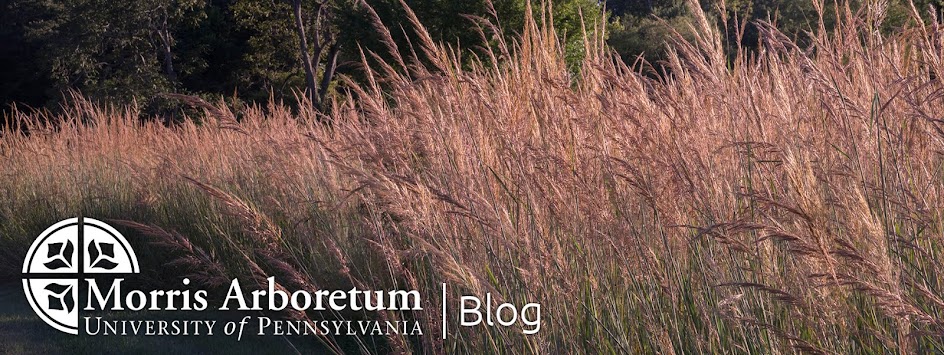 |
| Carley K Photography |
It was a chilly winter day and a light layer of snow covered the ground when Patrick Coyne visited the Morris Arboretum and carefully hid a bouquet of lisianthus flowers near the swan pond. His nerves had been building up over the past week and he wanted to make sure every detail felt perfect. A customized ring inspired by the very same flower was sitting in his pocket and in a few short hours he would propose to his girlfriend of a little more than a year, Jennifer Topper.
The couple had recently returned from vacation together in Key West, Florida, adopted a pitbull terrier mix puppy, and while things were feeling serious, joked about getting engaged. Little did Jennifer know, Patrick had already met with Christopher Dorman, Assistant Director of Visitor Services, and toured the arboretum looking for the perfect location to pop the big question.
"As soon as I saw the swan pond, it kind of stood out," says Patrick, "It ended up working out perfectly. The snow on the ground looked like a perfect winter landscape."
Patrick heard about the Morris Arboretum through word of mouth and knew that Jennifer was yearning to visit. Both of them are very attracted to nature, history, and art. A proposal surrounded by the well-maintained garden features of the Arboretum would make the moment more special to her because she grew up learning how to garden with family members.
"I loved helping my mom in her garden growing up. I mostly did the planting and she did the maintenance. My grandfather is a master gardener. Their house was always full of flowers," Jennifer remembers fondly.
The plan was elaborate but the Arboretum's staff was able to accommodate and a hidden photographer managed to capture the moment.
"I had to make up a lie that there was a special unveiling of a winter flower," says Patrick, "I told her it cost a lot per ticket…and we couldn't miss it."
Jennifer began to feel suspicious when she not only had to call off work but also wasn't rushed to make it to the fictitious event - even though they were running late. On the way, Patrick presented her with a book carefully wrapped in Christmas paper. Inside was the story of their relationship.
"That’s when I got a little suspicious," Says Jennifer. “We got there and we started rushing - he was being really cute and it was really sweet but I still didn’t know what was going on. I was very surprised and happy [when he proposed]...I thought all of it was really impressive.”
Patrick was happy his plan went off well and that she loved his surprise. “She’s the most thoughtful person I know.” He says, “Loving, caring, shy at certain time but speaks her mind when she has a strong opinion, hardworking and self motivating.”
Patrick and Jennifer will wed in September and plan to incorporate food from the farm that Jennifer works at and the beer that Patrick brews. The happy couple look forward to visiting the arboretum often and observing the way it grows and changes with the seasons.
Article contributed by Sarah Timmons.
Photo: Carley K Photography, www.carleykphotography.com.
'Love in the Garden' is a special series featuring stories about proposals, weddings, and other memorable moments that have happened in our garden. To be featured, please contact info@morrisarboretum.org.





































